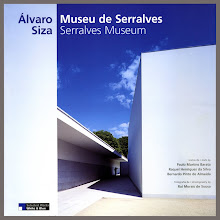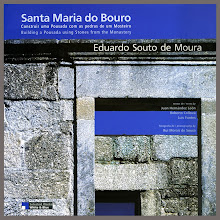
Vitra is a furniture company located in the small German town of Weil am Rhein, with headquarters in nearby Birsfelden, Switzerland.
With a privileged situation near the German- Swiss - French border, very close to the Swiss city of Basel, its strategic position combined with clever and innovative management have made Vitra a leading name in design furniture, manufacturing the works of many internationally acclaimed designers.
The company was founded in 1950 and today the Vitra Campus showcases buildings by some of the most famous architects, like Álvaro Siza (Factory Building and Passage), Frank Gehry (Vitra Design Museum, Vitra Atelier and Headquarters Building), Herzog & de Meuron (VitraHaus), Nicholas Grimshaw (Factory Building), Tadao Ando (Conference Pavilion, the subject of this post) or Zaha Hadid (Fire Station).
And the list goes on… Since I visited Vitra in 1995, several new buildings were added to the “collection”.




The Conference Pavilion by Tadao Ando was the architet’s first building outside of Japan.
It was built in 1993, just two years before I made these images, and has a very interesting characteristic: a large part of its volume is concealed under ground level, greatly reducing its impact on the surrounding landscape.
Predominantly built out of beton, with floors made out of wood, it manages to transmit a rather “soft” sensation. If you caress some of its walls, you almost have the feeling of touching velvet… If I remember well, it was explained to me that there were some ashes mixed up with the cement…
Myth or reality? I am not sure, but the feeling is definitely there!









I went to Vitra on assignment by Editorial Blau. I was commissioned to photograph the Vitra factory building by Álvaro Siza, to be included in the book “Álvaro Siza, 1986 – 1995”, and I was travelling to produce photographs for that publication.
From Weil am Rhein I would still drive up North to Holland to shoot further Siza buildings for the project, then I would go down again to Barcelona…
Taking a look around Vitra Campus I was enchanted by this relatively small building and decided to ask if I also could photograph it. Permission granted, I thought that it was a good subject to get acquainted with my new Corfield WA67, just shipped by Mr. Brian Gould from England before I hit the road.
To photograph an entire building with only one camera / wide angle lens combination?
Was I driving nuts?








As a matter of fact, I believe that some pictures could have benefited from some other outfit not so extremely wide angle, but all in all I believe that I can say that the Corfield WA67 did rather well, mainly when I think that it is a very specialized camera, which design was not surely meant for universal use…
On Interior Photography this (relatively) small wide angle shift camera really shines!
And that from day one!, as these photographs attest.
(I had only shot a very few images of the Santiago Calatrava bridge in Mérida, while driving by on my way up to Germany; forgot to pull out the dark slide on some of them…).
On this very first experience with the Corfield WA67, I could be convinced that I had made the right choice, searching for an easy to use piece of gear for Interior /Architecture Photography.
Up to this day, I keep on cherishing this little marvel of a camera.
Long live my Cory!
P.S.: Should you be curious about the Corfield, follow the tags below, and find my former post about it, in case you missed it before.
Some of this color photographs were published by the Dutch Architecture Magazine “de Architect” from Den Haag.
The black and white negatives have been sleeping in my archive. It is the first time that I show them!
Technical Data:
Camera - Corfield WA67 (6x7 format)
Lens (not interchangeable) - Schneider Super Angulon 5.6 / 47mm
Film - Kodak
Location - Weil am Rhein, Germany
Date - May 1995
..




+copy.jpg)
+copy.jpg)
+copy.jpg)
+copy.jpg)
+copy.jpg)
+copy.jpg)